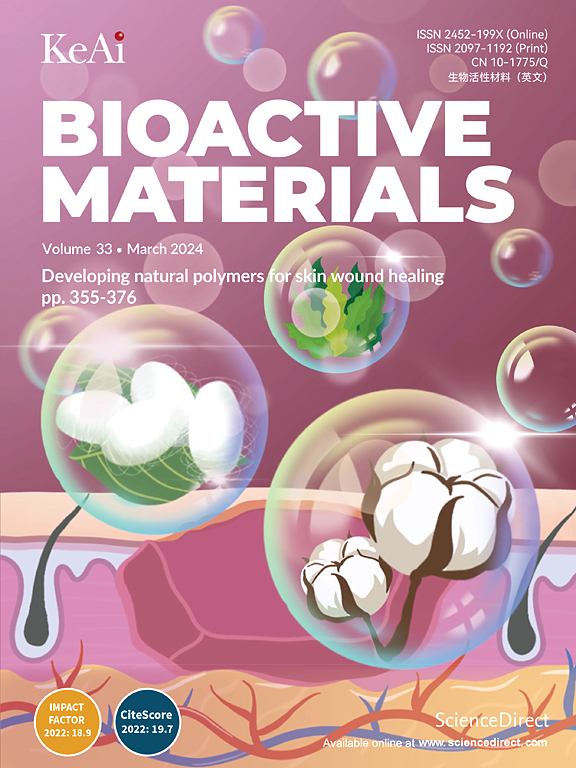Synergistic restoration of spinal cord injury through hyaluronic acid conjugated hydrogel-polydopamine nanoparticles combined with human mesenchymal stem cell transplantation
IF 18
1区 医学
Q1 ENGINEERING, BIOMEDICAL
引用次数: 0
Abstract
Spinal cord injury (SCI) is a devastating disease with limited treatment options due to the restricted regenerative capacity of the central nervous system. The accumulation of reactive oxygen species (ROS) and inadequate endogenous neural stem progenitor cells (eNSPCs) in the lesion site exacerbates neurologic deficits and impedes motor function recovery. We have developed a temperature-responsive hyaluronic acid conjugated hydrogel-polydopamine nanoparticles (PDA NPs) combined with human mesenchymal stem cell (hMSCs) transplantation, denoted as H-P-M hydrogel. Microglia cells treated with PDA NPs have been shown to reduce intracellular ROS levels by 65 % and suppress the expression of inflammatory cytokines such as IL-1β (decreased by 35 %) and IL-6 (decreased by 23 %), thus mitigating the microglia's inflammatory response. Additionally, our results have demonstrated that the H-P-M hydrogel combined with hMSCs transplantation can recruit eNSPCs to the injury site as evidenced by utilizing Nestin lineage tracer mice. The RNA-seq has unveiled the potential of the H-P-M hydrogel to facilitate eNSPCs neuronal differentiation through the MAPK pathway. Furthermore, these differentiated neurons are integrated into local neural circuits. Together, it suggests that the H-P-M hydrogel synergistically improves the SCI niche. It serves as catalysts inducing 5-HT axon regeneration and improving BMS score after SCI through the modulation of the ROS milieu and the promotion of neuronal differentiation from eNSPCs, thereby presenting a promising strategy for SCI repair.

求助全文
约1分钟内获得全文
求助全文
来源期刊

Bioactive Materials
Biochemistry, Genetics and Molecular Biology-Biotechnology
CiteScore
28.00
自引率
6.30%
发文量
436
审稿时长
20 days
期刊介绍:
Bioactive Materials is a peer-reviewed research publication that focuses on advancements in bioactive materials. The journal accepts research papers, reviews, and rapid communications in the field of next-generation biomaterials that interact with cells, tissues, and organs in various living organisms.
The primary goal of Bioactive Materials is to promote the science and engineering of biomaterials that exhibit adaptiveness to the biological environment. These materials are specifically designed to stimulate or direct appropriate cell and tissue responses or regulate interactions with microorganisms.
The journal covers a wide range of bioactive materials, including those that are engineered or designed in terms of their physical form (e.g. particulate, fiber), topology (e.g. porosity, surface roughness), or dimensions (ranging from macro to nano-scales). Contributions are sought from the following categories of bioactive materials:
Bioactive metals and alloys
Bioactive inorganics: ceramics, glasses, and carbon-based materials
Bioactive polymers and gels
Bioactive materials derived from natural sources
Bioactive composites
These materials find applications in human and veterinary medicine, such as implants, tissue engineering scaffolds, cell/drug/gene carriers, as well as imaging and sensing devices.
 求助内容:
求助内容: 应助结果提醒方式:
应助结果提醒方式:


